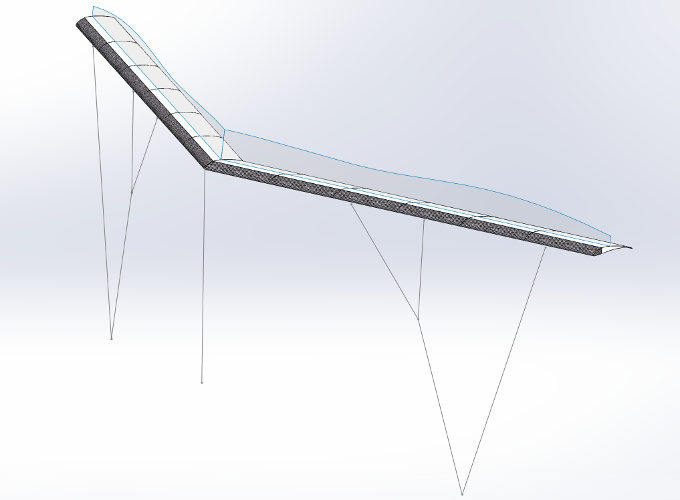The objective of this project is the development of a multidisciplinary system level model of a typical AWE system. The wing is in the focus of this model because the design of this component is crucial for the performance of the overall system. For system-level optimization power curves are chosen as a metric of overall system performance. A fast power curve model that incorporates system and sub-system specific parameters such as wing geometry, size, aerodynamics, ground station parameters along with site specific operational parameters is used to determine the energy yield from a typical EnerKíte system at a given site. This model is complemented with a structural model of the wing subsystem, balancing computational time and model fidelity to allow for the rapid generation of typical wing designs. The structural model accounts for external loads such as the aerodynamic force distribution, which is computed by a nonlinear vortex step method, and the bridle forces, computed from the bridle geometry and the aerodynamic forces on the wing. The structural model is verified with both individual component level specimen tests, as well as at the overall subsystem level by sizing different prototype wings that are then tested along with the other systems with the EnerKíte development platform EK30.
Multidisciplinary System Design, Safety and Cost Optimisation of AWE

Multidisciplinary System Design, Safety and Cost Optimisation of AWE
Publications
(2020).
Structural Analysis and Optimization of a Tethered Swept Wing for Airborne Wind Energy Generation.
Wind Energy.
(2017).
Comparison of Launching & Landing Approaches.
Book of Abstracts of the International Airborne Wind Energy Conference (AWEC 2017).
(2017).
Structural Analysis and Optimization of an Airborne Wind Energy System.
Book of Abstracts of the International Airborne Wind Energy Conference (AWEC 2017).